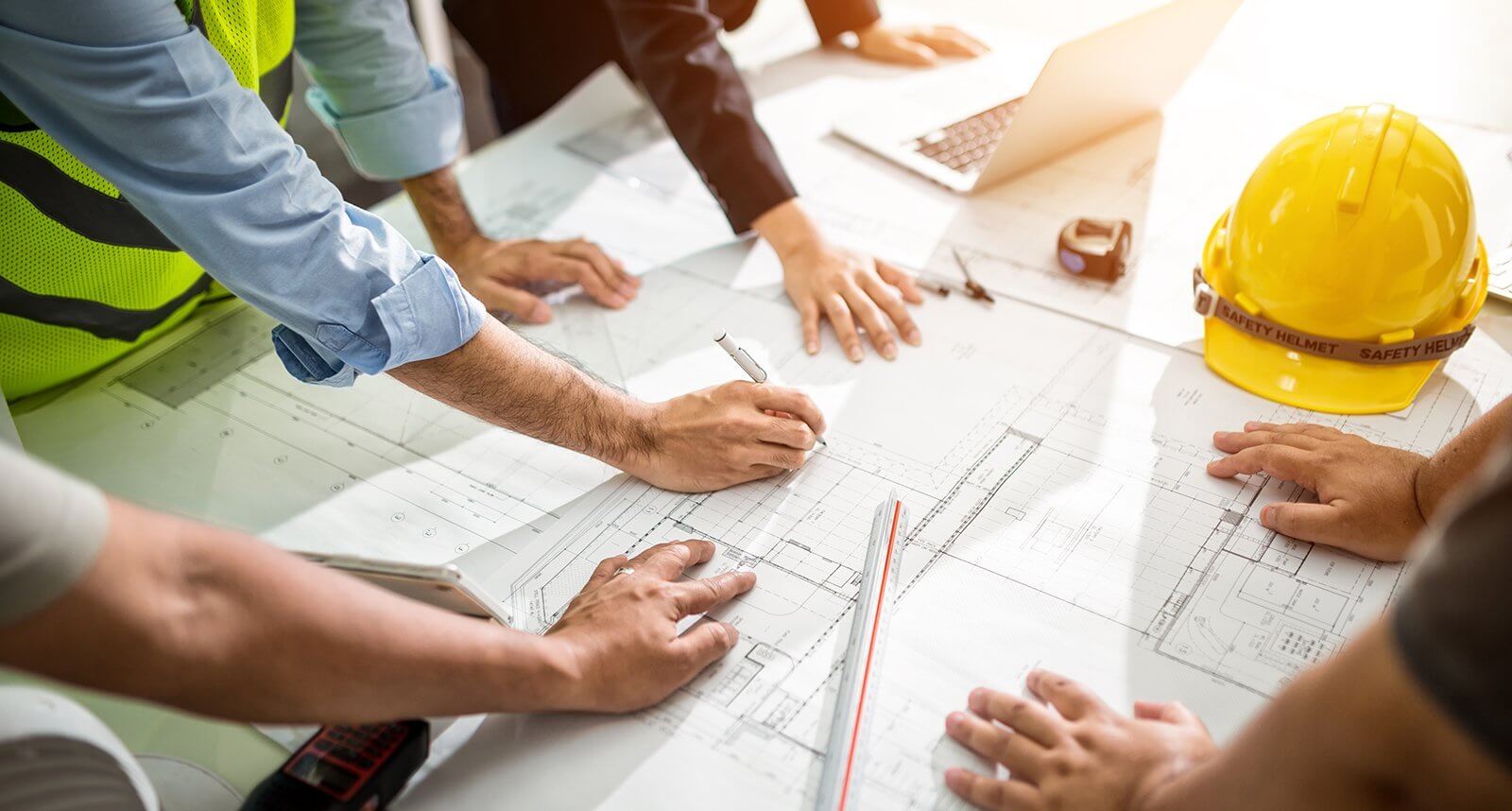by Jeffrey C Kadlowec, Architect
Abstract
Project manager must provide proper planning and a wide variety of resources to successfully complete unique and complex construction. Lean principles from the manufacturing sector provide tools and techniques to improve performance at a reduced cost with limited waste. Integrating the critical path method with building information modeling provides a multi-dimensional representation of projects. This allow for better decision-making through analysis of data and evaluation of scenarios. It provides a means for optimizing procedures and processes, leading to enhancement of buildings and structures. These ideas and concepts will ensure adequate quality, value and profits in current and future business endeavors.
Keywords: lean construction, project planning, cost control, value creation

Project Planning
The long duration, uniqueness and complexity of construction projects requires adequate planning, scheduling and resources. Project managers must focus on increasing productivity, improving quality, reducing costs and limiting waste. Lean principles from manufacturing have begun to revolutionize the construction industry to achieve those objectives. Successful implementation of lean construction remains hindered by inadequate education, the lack of knowledge, and a resistance to change [Abdullahi 2023]. Focus on stakeholder engagement, personal accountability, and clear communication will benefit construction projects and increase customer satisfaction.
The critical path method (CPM) was developed in the 1950’s and remains the most common technique for scheduling of construction projects. These network diagrams identify all activities and their relationships to one another. This provides a logical means for sequencing of tasks and determines the total duration. Project teams can then manage the tasks to ensure on-time delivery [Abdullahi 2023]. Integrating building information modeling (BIM) can provide 3D representation of the CPM schedule, creating opportunities for early visualization, improved planning, and further optimization.
The construction industry differs from manufacturing processes in that it is site specific and unique in design. The manufacturing industry can be continuously improved through innovate procedures and integration of technology, while construction projects are subject to changing conditions that affect time, cost and quality (TCQ). Lean construction (LC) was introduced to promote a new production philosophy. The principles include 1) eliminating activities that do not add value, 2) increasing output by considering customer requirements, 3) reducing variability, 4) shortening cycle time, 5) minimizing & simplifying tasks, 6) increasing output flexibility, 7) improving process transparency, 8) focusing on the complete process, 9) continuously improving the process, 10) balancing flow with conversion, and 11) defining benchmarks [Rajab 2022]. The goal is to minimize waste of time, material and effort while generating the greatest possible value.
Traditional construction methods focus primarily on scheduling all activities without considering, minimizing or eliminating non-essential ones. This practice routinely fails to deliver on-time, within budget, or at the require quality standards. The economic advantages of applying LC involve mitigating risks, better inventory control, shorter delivery time, reduced project costs, and improved quality of work. Social benefits include increased labor productivity, improved health and safety of workers, greater customer satisfaction, and higher employee retention [Rajab 2022]. Reducing the generation of waste and increasing overall sustainability achieves ‘green’ environmental standards.
The success of a construction company is dependent upon a high level of organization. Management must understand the responsibility of every employee, how to utilize them effectively, and assigning them appropriate tasks. The organization should be optimized through developmental stages, implementing new tools and the latest methods to increase performance and eliminate gaps [Parfenova 2020]. Concepts from the LC system are innovative ways of enhancing design and construction procedures. Operational techniques should improve for individual processes while promoting worker accountability at the construction site. Strategic objectives can be achieved by increasing value flow and coordinating responsibility throughout the management team. Integrating these methods into construction management (CM) will reduce losses and increase profits.
Implementation of LC, like most new ideas, is often met with resistance and failures. Thoughtless strategies can lead to greater workloads. Engaging practitioners—instead of theorists—will create better outcomes. Shifting responsibility to consultants does not change internal processes. Patience and consistency are required when fast results are expected. Delegation to select groups must include participation of the entire project team. Untrained personnel may refuse to learn new techniques. Development of innovations could lack necessary incentives. Eliminating unnecessary procedures is more beneficial than optimizing them. Management could be reluctant in reducing staff to increase efficiency [Parfenova 2020]. Long-term gains and the reduction of losses require full commitment to the LC philosophy.
Lean production was developed in the 1950’s to minimize waste of materials, time and effort in manufacturing by improving internal processes. Lean thinking (LT) has evolved for removing waste and reducing costs into a management approach to enhance value for customers and better meet their needs. LC adopts these principles from production to improve the construction process by balancing people, materials and resources with efforts to maximize value and minimize costs [Kiruthika 2019]. The lean principles in construction are 1) reduce non-value adding activities, 2) increase value of output, 3) reduce variability, 4) decrease cycle time, 5) minimize steps, parts and links, 6) increase flexibility of output, 7) improve transparency of process, 8) focus control on the entire process, 9) continuously improve the process, 10) balance flow with conversion, and 11) define benchmarks. Implementing these concepts will improve project performance and increase customer satisfaction.
Application of LT into architecture, engineering and construction (AEC) is better known as LC. The philosophy began development 30 years ago upon recognition of the incongruent manner of project delivery [Tommelein 2015]. A common phrase in the construction industry is, “You can have it good, fast or cheap. Pick two.” Lean attempts to overturn that old paradigm by achieving all three objectives simultaneously. CM must incorporate time, money, labor, material, equipment, and site. Considering the interconnection of these factors presents more opportunities for improvement leading to better performance.
Value stream mapping, fish-bone diagrams and Pareto analysis are three lean tools that are used to evaluate and eliminate waste [Maske 2020]. Flowcharts account for construction related activities including required labor and duration. Activities that do not provide direct or indirect value or required for supporting others can be identified. Diagramming problems and delays determines the root cause by exploring a variety of contributing factors back to their source. Analyzing the frequency of issues causing problems will guide decisions toward remedies and future improvements.
Small businesses are faced with several challenges in adopting lean principles. There is a substantial amount of time to be invested by management. The reaction of employees and the effect of changes in procedures is underestimated. Sufficient workforce training and expertise is required. A lack of understanding remains for the potential benefits of lean, so there is a tendency to revert to older inefficient methods [Hameed 2023]. The most productive ideas and efficient processes will ultimately result in better quality.
Construction generated 35% growth in net value from $7.4 trillion in 2010 to $10.3 trillion in 2020. Even with that increase in value, the fragmented nature and competitive structure of the industry still result in low profits. Unfortunately, more waste was produced through construction than by any other industry in the world [Demirkesen 2022]. Implementing effective strategies to increase the level of competitiveness and reduce the amount of waste is essential to construction companies and the industry as a whole. Understanding critical success factors (CSFs) for lean implementation will allow managers to form effective strategies for small and medium enterprises (SMEs).
A wide variety of lean tools and techniques are available to facilitate changes throughout the construction industry [Demirkesen 2022]. Work structuring and standardization arranges processes into manageable and repeatable packages assigned to specialist which improves work flow and reliability. The Last Planner System (LPS) is a collaborative framework for planning and execution focused on rapid learning and a predictable work flow. Prefabrication and modularity integrate the benefits from manufacturing and assembly to reduce health and safety risks while improving quality. Just-in-time (JIT) delivers materials as required to optimize inventor and reduce storage. The ‘5S’ are keywords—sort, set, shine, standardize and sustain—that aim to organize the workplace. Visual management provides the means for information gathering from sensory systems. Mistake-proofing offers design controls to prevent procedural errors from becoming production defects. The Japanese word ‘kiazen’ meaning, “continuous improvement,” is used to best describe these philosophies.
The AEC industry has begun adopting sustainable practices to reduce waste of resources and increase the efficiency of processes. Leadership in Energy and Environmental Design (LEED) was introduced by the U.S. Green Building Council (USGBC) as a rating system to promote similar objectives. As awareness of environmental issues continues to grow, lean thinking is a way of achieve goals in sustainability. Although these trends evolved independently with other agendas, the Environmental Protection Agency (EPA) proclaims that LC produces cultural and operational conditions for sustainable processes to minimize waste, reduce energy consumption and prevent pollution [Demirkesen 2022].
The Global Reporting Initiatives (GRI) publishes guidelines for sustainability in construction and real estate. Environmental standards include comprehensive building modeling, reducing energy use and greenhouse gas emissions, energy-efficient design, renewable energy technology, intelligent selection of materials, and limiting noise pollution. Recycling materials, monitoring comfort and quality, and measuring and reporting performance further improve an organization. Social influence focuses on equal employment opportunities and a diverse workforce, enhancing skills through education and providing health and safety training. Employee volunteering, participation in the community, academic research, and combating bribery, fraud, and corruption provide a broader impact. Economic indicators comprise sustainable value of property, high return on investment, and addressing market demands. These provide tax contributions, utilize local resources, and create jobs during construction and long after its completion [Demirkesen 2022].
Three phases of design, engineering and assembly compose the building process. Design is focused on the creation of facilities and functionality for the built environment. Engineering prepares those ideas for construction, operation and habitation. Assembly refers to the process of fabricating and erecting these structures [Awad 2021]. Construction is centered around the project, unlike manufacturing which is product-based. Tools, techniques and procedures developed in production must be adapted for the benefits to be realized throughout the construction industry.
Motivated by economic competition, the lean approach is changing AEC with a focus on efficiency. Factory standardized components and custom-built products fabricated in workshops should be selected to replace on-site work as much as possible. Industrialization through simplified and standardized assemblies reduces labor-intensive work in the field. Rational and contemporary design are favorable over traditional or outdated styles. Modern techniques should be utilized in lieu of older means and methods [Awad 2021]. Facilities must provide private and communal areas dependent on sociological needs. Identification and study of building elements allows for revision of the program. This leads to the optimization of habitats through a strategy of configuring spaces to reduce architectural components through combined function and shared use.
Construction cost is derived from the price of materials, labor and equipment, while construction time depends on components, coordination and conditions. Traditional construction relies heavily on manpower, weather and auxiliary resources. Labor performance suffers from a lack of homogeneity, little progress towards technical solutions, improvisation in place of design detail, and an emphasis on quantities over quality. Material considerations include adjustments that create waste, lack technological evolution in traditional materials, special rework is required for mistakes and defects, and the equipment required to perform the work. Timeframe depends on shaping, setting, drying and lead times of products, manpower required on-site and off-site, the linear nature of the work, and scheduling of different trades [Awad 2021]. Lean thinking offers ways of optimizing these areas, incorporating industrialization in response to urbanization (see Fig 1).

Figure 1. Industrialization Trend [Awad 2021]
Construction projects have high uncertainty and remain volatility due to the nature of the work undertaken by numerous trades under variable conditions. Project managers must understand the functionality of numerous LC tools available to meet objectives and develop a framework for selecting appropriate techniques to reduce risks, limit waste, and improve productivity [Aslam 2022]. Planning, design and process variables should be minimized. Material flow and work flow must be maintained. Communication, working procedures, and worker safety should be improved. Defect analysis and control, better visualization, and focus on customers will further enhance performance.
The financial crisis, increasing competition, and client demands along with internal and external pressure compel the construction industry to adapt in a changing economy by adopting new methods and technologies. Project managers must seek out cheaper and more effective means that require less raw material and manpower [Aureliano 2019]. Reducing activities and processes increases conversion rates and workflow efficient. Considering client needs throughout planning and production improves overall value. Limiting variability allows for optimization of processes, leading to greater stability. Cycle time should be reduced to avoid the accumulation of stock and inventory. Simplifying steps, parts and links, and adjusting processes eliminates useless tasks. Flexibility increases the capacity of modification to meet client needs without significant cost. Process transparency allows for easier control and optimization, thereby reducing the probability of failure. Global process control spans segmented workflow across different organizations. Strong employee participation leads to continual process improvement. Conversations should be prioritized to improve conversion and balance workflow. Benchmarking provides performance indicators to compare and optimize processes. These eleven LC principles—when applied properly—will increase value, leading to success for projects, clients and companies.
The economic world has been going through major transformations, and the construction industry is experiencing the effects of a fourth industrial revolution (‘4IR’ or ‘Industry 4.0’) [Lekan 2022]. New paradigms are being developed to improve quality, increase productivity and minimize costs. BIM provides tools to analyze additional dimensions of time, cost, management, sustainability, and health & safety beyond traditional 2D drawings and 3D visualization. LC encourages the elimination of waste in all forms, including production and processes. Artificial intelligence (AI) and the internet of things (IoT) can model scenarios and quantify risks to better manage situations and ensure positive outcomes. Ever increasing knowledge and rapidly improving technologies will continue to provide net gains now and into the foreseeable future of design and construction.
References
Abdullahi, Chandra Magno & Tembo, Moffat. (2023). Improving the Efficiency and Effectiveness of Construction Project Planning and Scheduling Using Lean Principles. International Journal of Construction Engineering and Management. 12(3): 75-80. DOI: 10.5923/j.ijcem.20231203.01.
Aslam, Mughees; Gao, Zhili & Smith, Gary. (2022). Framework for Selection of Lean Construction Tools Based on Lean Objectives and Functionalities. International Journal of Construction Management. 22(8): 1559-1570. 10.1080/15623599.2020.1729933.
Aureliano, Filipe; Costa, Ariellen; Júnior, Ivan & Rodriques, Roger. (2019). Application of Lean Manufacturing in Construction Management. Procedia Manufacturing. 38: 241-247. 10.1016/j.promfg.2020.01.032.
Awad, Tamar; Guardiola, Jesús & Fraíz, David. (2021). Sustainable Construction: Improving Productivity through Lean Construction. Sustainability. 10.3390/su132413877.
Demirkesen, Sevilay & Bayhan, Hasan Gokberk. (2022). Critical Success Factors of Lean Implementation in the Construction Industry. IEEE Transactions on Engineering Management. 69(6). DOI: 10.1109/TEM.2019.2945018.
Hameed, M & Naimi, S. (2023). Examining Lean Construction Principles and Implementation Obstacles. International Journal on Technical and Physical Problems of Engineering. 55(15)2: 237-245.
Khodeir, Laila & Othman, Reem. (2018). Examining the Interaction Between Lean and Sustainability Principles in the Management Process of AEC Industry. Ain Shams Engineering Journal. 9: 1627-1634. dx.doi.org/10.1016/j.asej.2016.12.005.
Kiruthika, M; Renuka, S M & Umarani, C. (2019). Lean Techniques in Construction Industry: State of the Art. International Journal for Research in Engineering Application & Management. 5(3). DOI : 10.35291/2454-9150.2019.0242.
Lekan, Amusan; Clinton, Aigbavboa; Stella, Essien; Moses, Emetere & Biodun, Obaju. (2022). Construction 4.0 Application: Industry 4.0, Internet of Things and Lean Construction Tools’ Application in Quality Management System of Residential Building Projects. Buildings. 10.3390/buildings12101557.
Maske, Niraj B & Valunjkar, Shriniwas. (2020). Deployment of Lean Construction Methodologies for Minimizing Time and Cost of the Project. ICACSE. 24-25.
Parfenova, E N; Avilova, Zh N & Ganzha, A N. (2020). Lean Construction: An Effective Management System in the Construction Industry. IOP Conference Series: Materials Science and Engineering. 945. doi: 10.1088/1757-899X/945/1/012012.
Rajab, Omar. (2022). Lean Construction. 8th Jordan International Civil Engineering Conference on Smart Civil Engineering.
Tommelein, Iris D. (2015). Journey toward Lean Construction: Pursuing a Paradigm Shift in the AEC Industry. American Society of Civil Engineers. DOI: 10.1061/(ASCE)CO.1943-7862.0000926.



